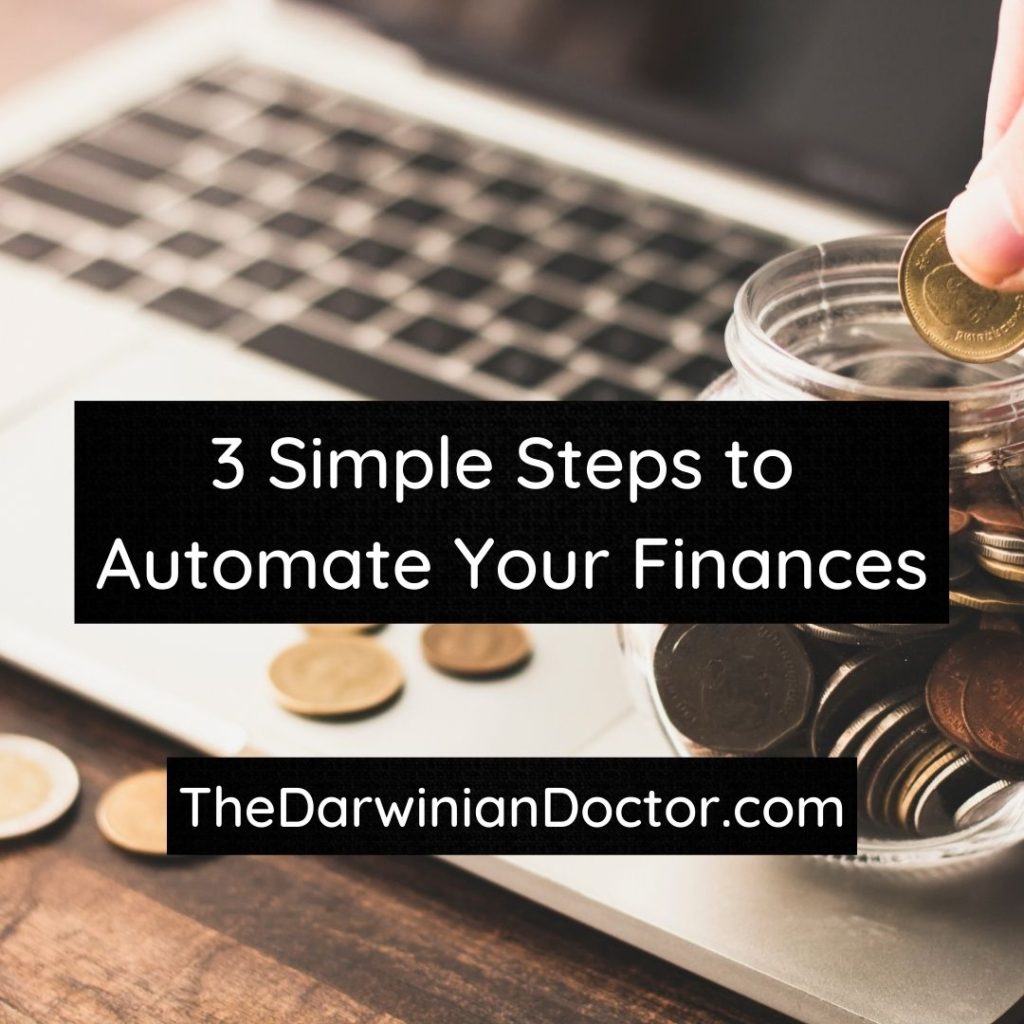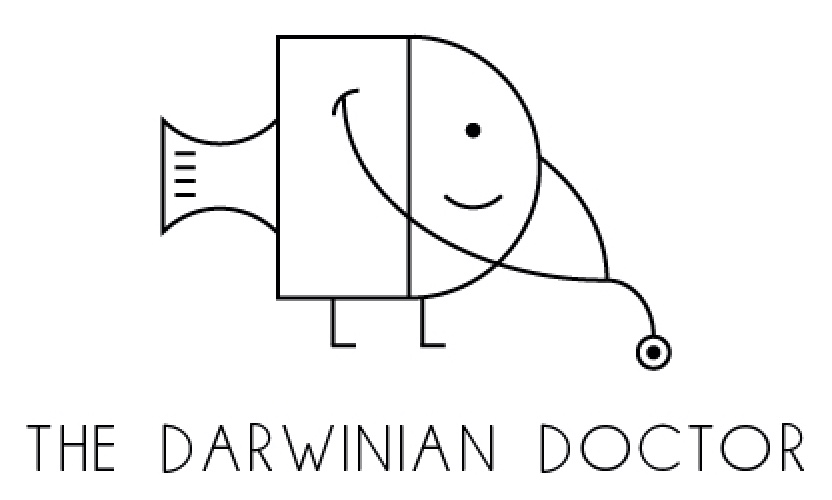These are the 3 simple steps to automate your finances on the journey to financial independence.

This post may contain affiliate links.
These are the 3 simple steps to automate your finances on the journey to financial independence.
- Arrange direct deposit for your paycheck
- Set automatic transfers to your saving and investing accounts
- Autopay all your recurring expenses
Read below for an explanation!
Why should you automate your finances?
Let’s face it, you’re busy. If you’re reading this, you’ve probably got a full time job, a couple of kids, and a spouse. (Or you’re on your way to this scenario.) You’ve probably also got aspirations towards financial independence and living an intentional life.
One major tool on this journey is automation. The more you can automate and remove from the willpower equation, the better your chances of success.
Remember: small victories, every month, are the surefire way to build your financial empire.
Below, I’m going to outline the 3 easy steps you can take to automate your finances every month. I’ll review the different accounts you need to set you up for success in your financial life. I’ll also go into my tips and tricks that I’ve learned in my own life.
Quick note before we get started: This plan assumes that you’re making more money every month than you’re spending. If not, please see this post: How to Save, Invest, and Become Rich.
Step 1: Arrange direct deposit for your paycheck
Automatic deposits of your paycheck is the first and fundamental step in your financial plan.
If you’re employed, you’re most likely going to be paid every 1-2 weeks. Although you could theoretically accept your payment in cash or check, you really need to have this directly deposited into a checking account. A checking account has the features that you will need to automate your financial life.
When you join a new employer, you just have to select direct deposit or ACH transfer. Give them the account number and routing number of your primary checking account, and that’s it! Every pay period your checking account will get filled with your paycheck.
Step 2: Set automatic transfers to your saving and investing accounts
This step is the real way you will build your financial empire. Set up automatic streams of money from your checking account into your wealth growing accounts.
I’ve intentionally placed this step prior to any discussion about bills because of the concept “Pay yourself first.”
Pay yourself first
This is a common saying in personal finance. It encapsulates the concept that you should contribute to your wealth building before you pay debts and bills. This doesn’t mean that you don’t pay your bills. It just means that you mentally prioritize your wealth in your life.
If you just save whatever is left over at the end of every month after paying bills, you’re more likely to have intermittent and variable contributions to your wealth. By putting it first (and automating it), you are teaching yourself the importance of your long-term financial goals.
Save an emergency fund first
An emergency fund is a pot of money that is set aside specifically for unforeseen expenses. Most personal finance advisors will agree that building an emergency fund is a critical step in your wealth building.
I agree with this. It doesn’t really make sense to contribute to fancy investments when a simple flat tire or dental bill will immediately cause you to default on your mortgage or car payment. So I recommend making this your priority when you’re starting out.
In the beginning, I recommend keeping your emergency fund in a simple savings account. It should be maintained at a set amount of money that is sufficient to cover a typical bad luck event in your life. If you’re starting out in your wealth building, I recommend saving $1000 in your emergency fund. That’s enough to give you a lot of peace of mind.
For your emergency fund, you want to maximize liquidity and ease of access instead of investment return.
If you’re further along in your wealth building, your emergency fund should grow to match your finances and needs. For example, instead of a strict emergency fund, I now just ensure that I have easy access to capital if I need it. I try to keep a $10,000 buffer in my checking account and know how to quickly convert my taxable investments to cash if I need to do this.
Tip: Automatic transfers
The easiest way to steadily grow your emergency fund (or any other fund) is to make automatic payments or transfers from your checking account.
To have access to automatic transfers, you need to be signed up for “online banking.” Once you’ve done this, you can set up as many automatic transfers as you want.
Retirement funds via your employer
Most employers will offer the ability to contribute to a retirement account such as a 401k or an IRA. These are accounts that let you save for retirement in a tax advantaged way so Uncle Sam doesn’t get to take a bite out of your cash before you invest it. These accounts are therefore a great way to get some serious momentum in your wealth building. With more money to compound in your retirement account every month, your wealth will grow much faster. You’ll be taxed when you withdraw the money, but that will likely be after you’ve enjoyed years of tax-free growth.
Your employer hopefully offers a variety of investment options, but I generally recommend that retirement plan money be invested in index funds like the Vanguard Total Stock Market Index. Bigger employers can often use the power of group investment to negotiate really favorable expense ratios to make this a very cost effective way of investing.
Wondering why index funds are a good idea? Read The Simple Path to Wealth.
To encourage investment into these funds, many employers also offer a “match.” This means they’ll contribute along with you towards your retirement (up to a certain % of your income). This is essentially free money, so you want to at least contribute enough to get the full match that your employer will contribute.
Most employers will make automatic contributions to your retirement fund on your behalf (if you give them permission). This is a good way to grow your wealth with very little work on your part (aside from the hours you spend at work!).
Automatically set aside money for investing
What if you’ve already saved your emergency fund, already max your retirement accounts, and still have money left over each month? You can automatically invest into funds like taxable investment accounts and 529 plans! Until we switched from traditional stocks over to a more real-estate centric investing strategy, this is what we did.
My wife and I set Vanguard to automatically withdraw money from our checking account every month. This was the simplest way for us to ensure that we were growing our investments and college savings plans for our kids.
Step 3: Autopay all your recurring expenses
Once you’ve taken care of automatically growing your wealth, then you can set up automatic payments for all of your recurring monthly expenses. By arranging automatic bill payments, you can make sure to avoid late fees. The automatic withdrawals will happen even if you’re busy. It’s one less thing to worry about.
But how do you know if you’ll have enough money in your checking account on the due dates for all of your expenses?
If you’ve already done your income and expenses spreadsheet, you’ll have a good sense of your usual spending and expenses. With this information on your spending habits, you’ll know how much money you have to keep in your checking account to avoid running dry at the end of the month.
These are the expenses you’re likely to have on your list of regular expenses:
- Mortgage payments
- Student loans
- Utilities
- Insurance
- Mobile phone bill
There are a few major expenses (like federal, state, and property taxes) that are likely to be periodic, but you can set up calendar reminders that will prompt you to make these payments as well.
By setting up automatic bill pay for all of your major and recurring bills, you’ll spend less time and have less stress for your monthly bills.
Tip: How to avoid overdraft fees:
Some of your expenses might vary a bit from month to month, and you don’t want to incur overdraft fees if your account becomes negative. To avoid this, you can link your checking account to a savings account. (Not your emergency savings account.)
Keep some cash in there as a buffer and authorize the bank to draw on these funds in case your checking account is about to go into the negative zone. This will help you avoid overdraft fees, which in some cases can be $30-50 for each occurence.
How much do you need to keep in there? Look at the monthly swings in your checking account. If it’s fairly stable, even a couple of hundred dollars might be enough. If you have big swings in your balance, maybe you need a couple of thousand dollars in there.
What about credit card payments?
Your credit card bill is often variable, which makes it tougher to predict each month. But you can see how widely your credit card spending varies by looking at your spending history. If you look through your last year of credit card spending, you’ll be able to estimate an average credit card balance for each month. Then you can plan to have this amount available in your checking account every month. If you leave enough of a buffer and keep an eye on the balance, you can also set this to autopay (this is what we do).
Tip: I advise you to pay off your credit card bills entirely every month. If you’re holding credit card debt from month to month, please go back to the basics.
Conclusion
To summarize everything again, these are the 3 easy steps to automate your finances on the journey to financial independence:
- Arrange direct deposit for your paycheck
- Set automatic transfers to your saving and investing accounts
- Autopay all your recurring expenses
By doing it in this order, you ensure that you will “Pay yourself first” and build wealth for your future self.
By the way, I promised to recognize one final benefit of automated finances (aside from more time and less stress in your life).
Here it is: you will feel like you have less money than you actually have. If your extra money is automatically whisked away from your checking account every month, you’ll adjust your spending patterns to match this leftover money. That will directly support your goals of wealth building and financial independence.
–TDD
Do you automate your finances? Comment below and please subscribe!
Perhaps you’re more of a Facebook type?
Are you a physician, spouse, or professional and you’re interested in using Real Estate to gain financial freedom? Join us in our Facebook group and accelerate your journey!


Want to support the blog?
- Join our investor club at Cereus Real Estate
- Visit my Recommendations page
- Check out my wife’s food blog: Eat Dessert First
- Stay at our luxury short term rentals
- Check out my TikTok channel
- Follow me on Instagram
- Follow me on YouTube
- Contact me with questions

